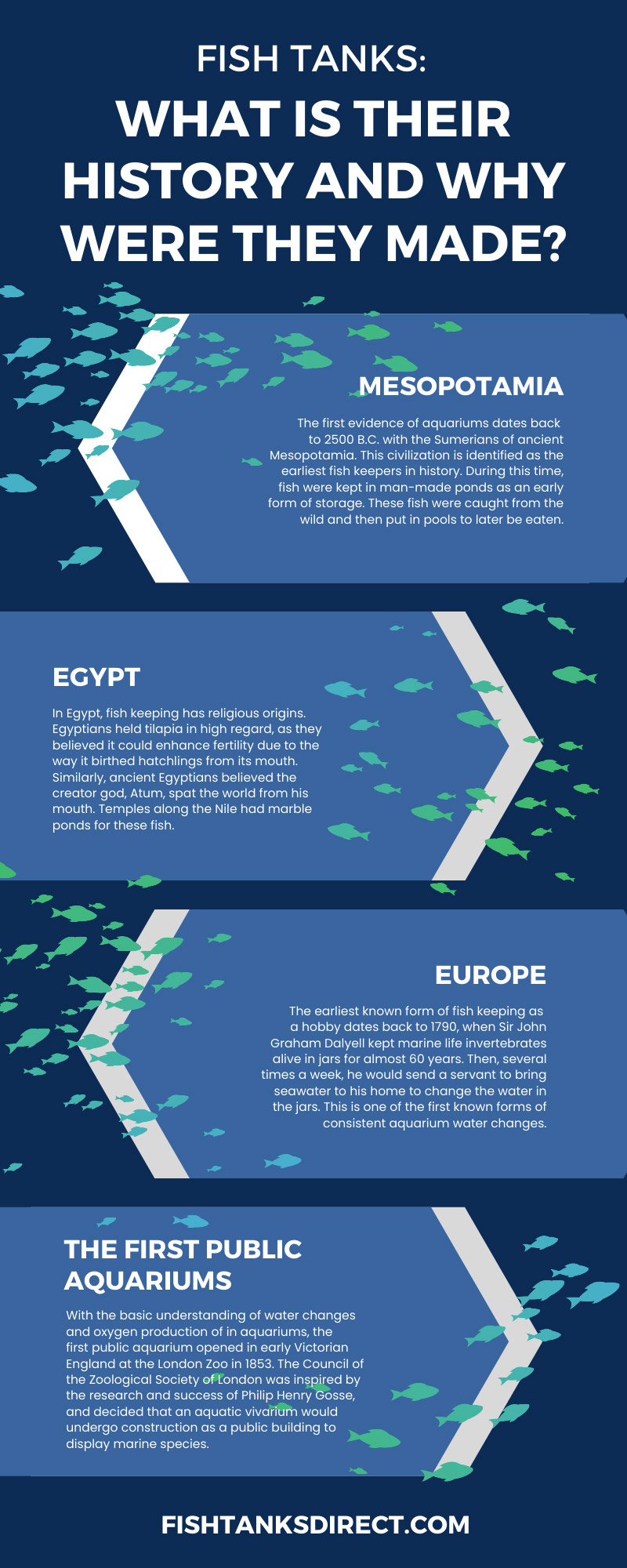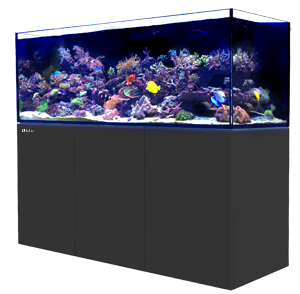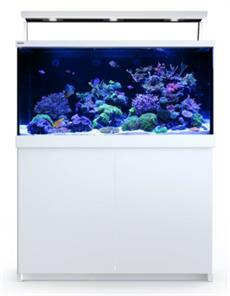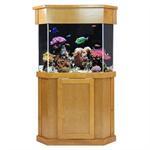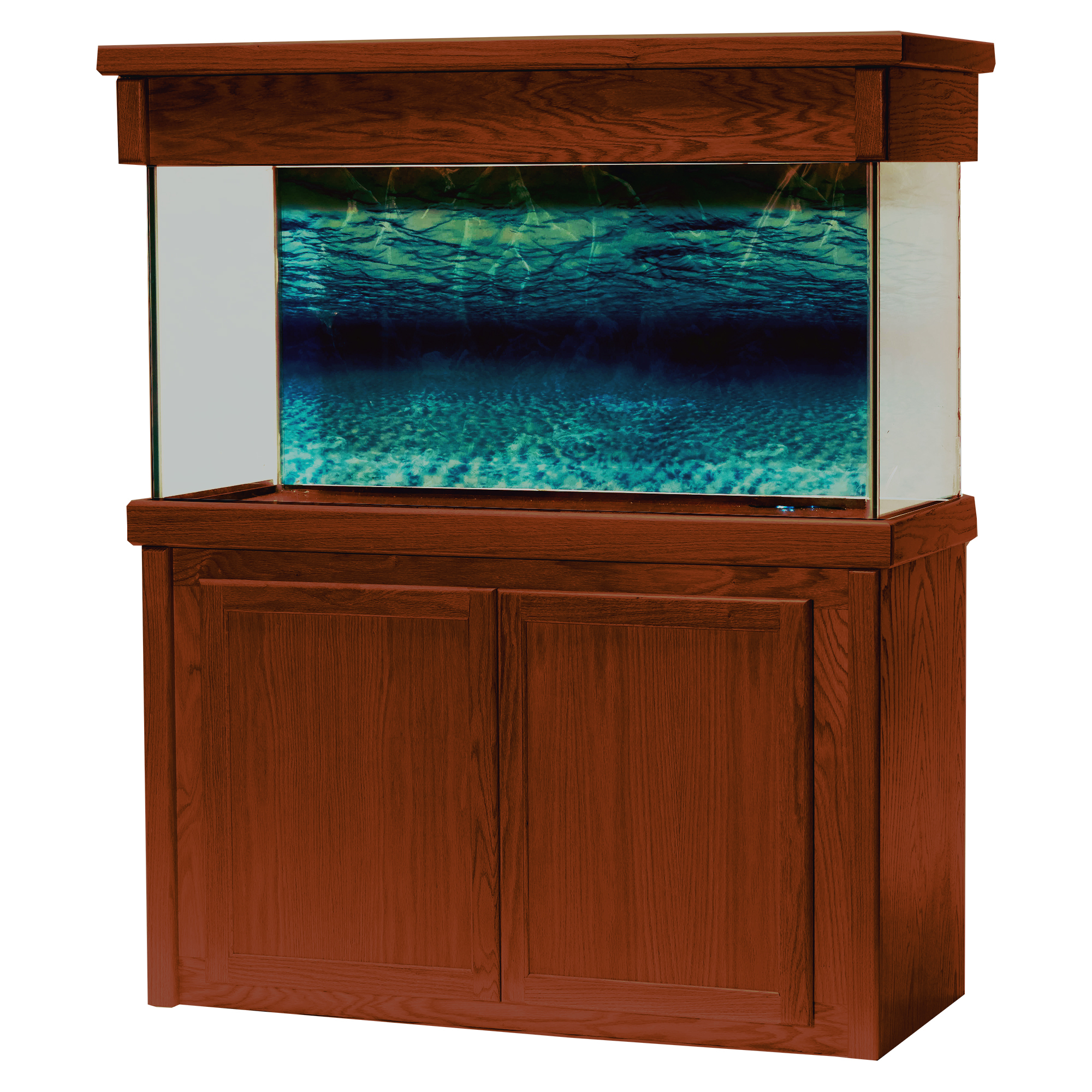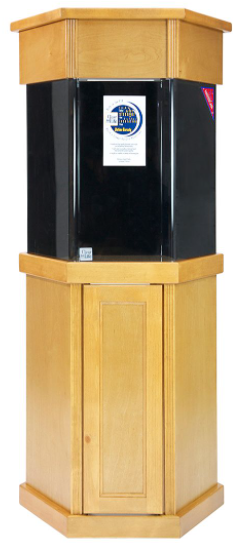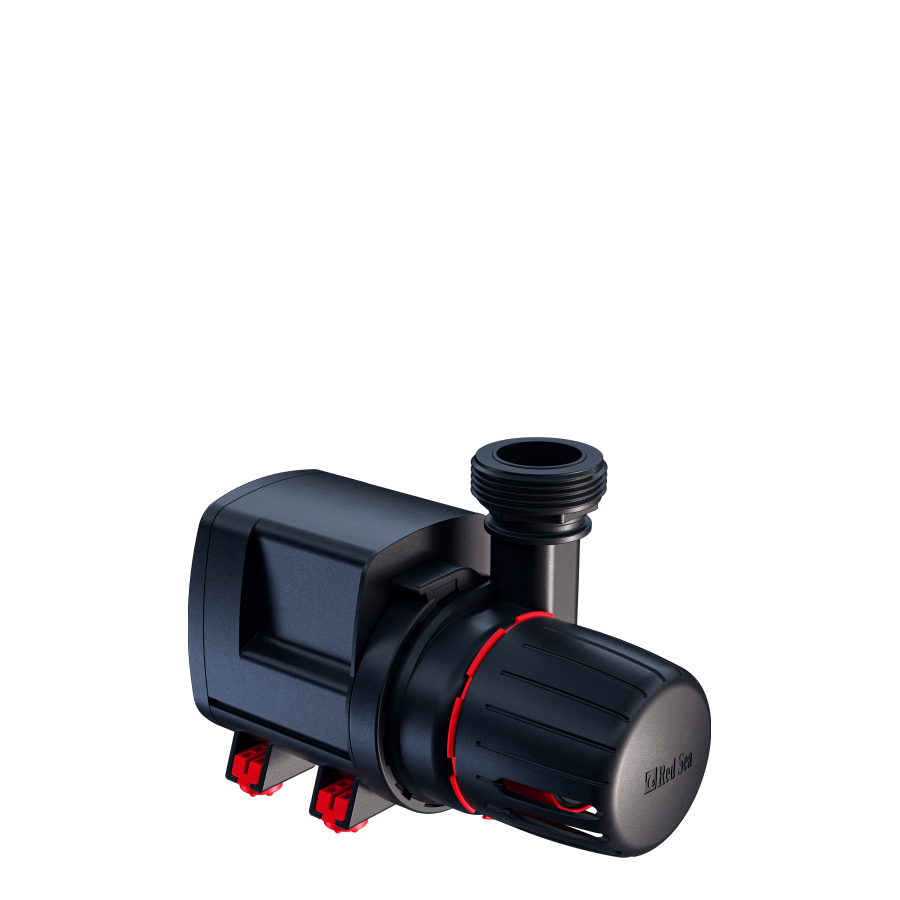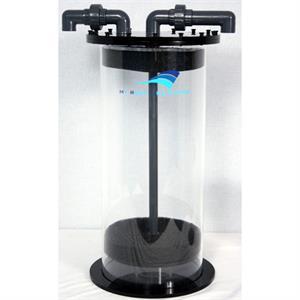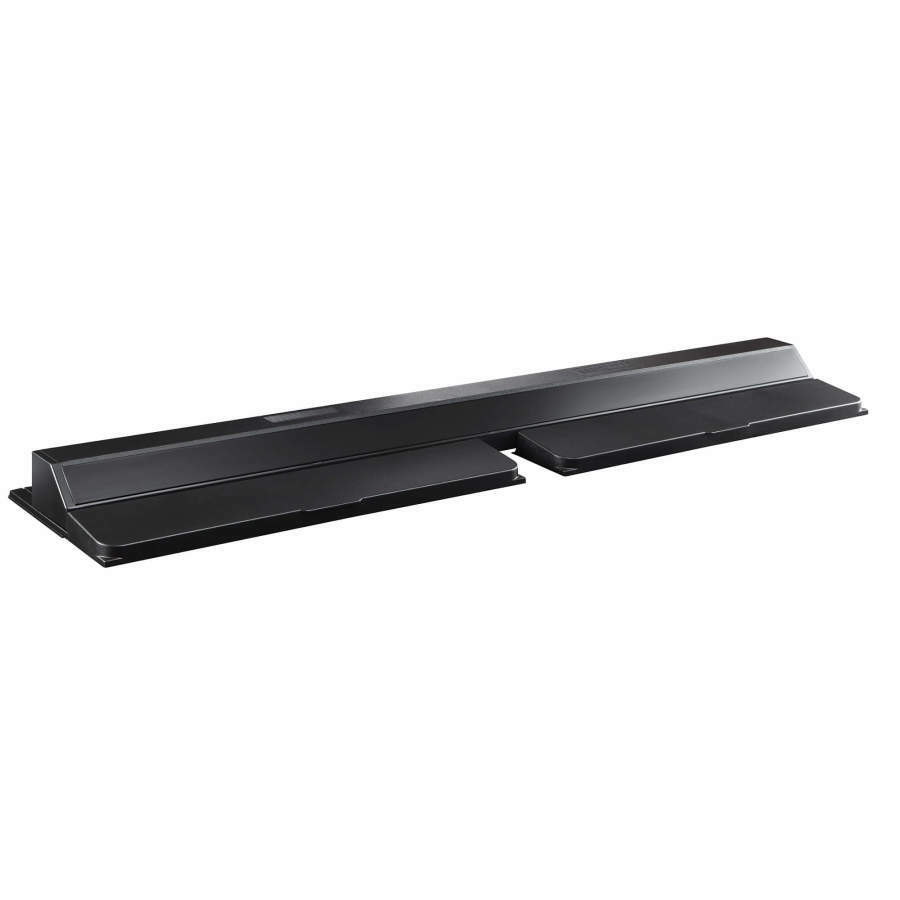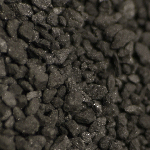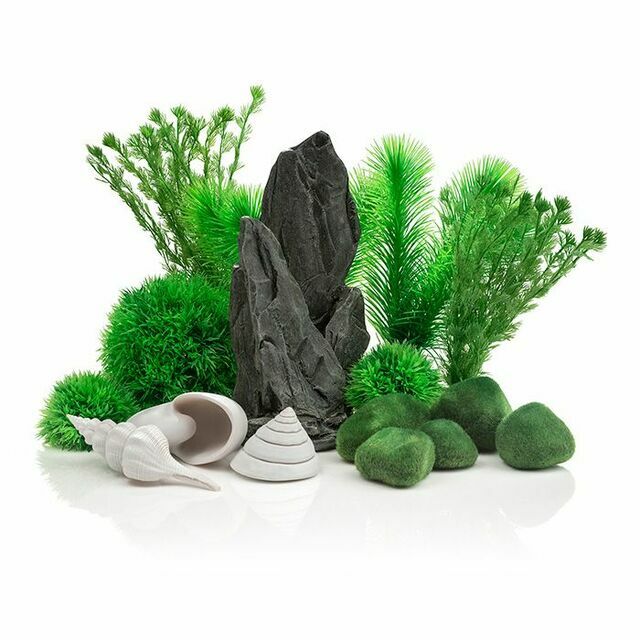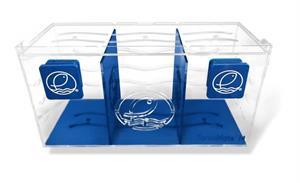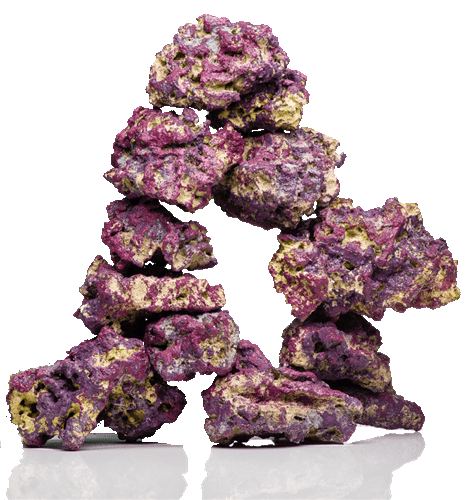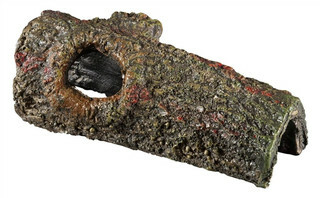Fish Tanks: What Is Their History and Why Were They Made?
Fish Tanks Direct on Jun 1st 2022
The evolution of the fish tank and its purposes reflects how the world has changed and advanced. What was once a means of survival transformed into a symbol of wealth, and is now a tool of education and a passion for hobbyists. Aquariums can be traced from ancient Mesopotamia to China, across landmasses and oceans to Europe and America. Let’s go over the history of fish tanks, and why they were made.
Mesopotamia
The first evidence of aquariums dates back to 2500 B.C. with the Sumerians of ancient Mesopotamia. This civilization is identified as the earliest fish keepers in history. During this time, fish were kept in man-made ponds as an early form of storage. These fish were caught from the wild and then put in pools to later be eaten.
While this may not seem like what we know as a modern aquarium, it is undoubtedly the origin. In their upper classes, the Sumerians valued the natural sciences and used these ponds to observe and classify fish. In addition to their usage in the ancient kitchens, these aquariums were associated with décor in ornamental gardens and temples.
Egypt
In Egypt, fish keeping has religious origins. Egyptians held tilapia in high regard, as they believed it could enhance fertility due to the way it birthed hatchlings from its mouth. Similarly, ancient Egyptians believed the creator god, Atum, spat the world from his mouth. Temples along the Nile had marble ponds for these fish.
Egyptians were also known to display wild animals and birds on walls, and fish were no exception. At the same time, tombs depict fish in other marble ponds being caught with fishing rods. Historians believe ancient Egyptians developed more efficient ways of catching food at this time, and that this was a form of sport and entertainment. This is supported by the fact that the fish depicted were not considered sacred like the tilapia or Nile perch.
China and Japan
Goldfish gained popularity in ancient China. Under the Tang Dynasty, evidence of ornamental water gardens started to appear. However, it wasn't until the Song Dynasty that this practice became commonplace, and large porcelain fishbowls housed and displayed goldfish.
The upper class observing and classifying these fish turned them into symbols of wealth, which is a repeating pattern. It wasn't until 1616 that goldfish were introduced to Japan by the Chinese.
This is where historians start to see depictions of carp in art. However, the Japanese wouldn't farm or make water gardens for these fish until their popularization in the 17th century. Koi have been depicted in paintings, gardens, moats, temples, and palaces ever since.
Europe
The earliest known form of fish keeping as a hobby dates back to 1790, when Sir John Graham Dalyell kept marine life invertebrates alive in jars for almost 60 years. Then, several times a week, he would send a servant to bring seawater to his home to change the water in the jars. This is one of the first known forms of consistent aquarium water changes.
Starting in the 1830s, French zoologist Félix Dujardin created a vessel that required fewer water changes by placing sea lettuce in each jar to produce oxygen. He mostly kept invertebrates in these jars, and was one of the first people recorded to keep jellyfish.
A few years later, Dr. George Johnston was the first to note and record that plants were essential to keeping these organisms alive. He kept corallines and micro-algae in jars with starfish, mussels, and annelids. He saw that the water had remained unchanged after eight weeks, and the corallines were growing.
In his book, A History of British Sponges and Lithophytes, Dr. Johnston wrote, "I need not say that if any animal, or even a sponge, had been so confined, the water would long before this time have been deprived of its oxygen, would have become corrupt and ammoniacal, and poisonous to the life of every living thing."
The First Public Aquariums
With the basic understanding of water changes and oxygen production of in aquariums, the first public aquarium opened in early Victorian England at the London Zoo in 1853. The Council of the Zoological Society of London was inspired by the research and success of Philip Henry Gosse, and decided that an aquatic vivarium would undergo construction as a public building to display marine species.
Gosse invented the iconic Victorian aquarium with its ornate design and fountain in the middle used to promote aeration. These aquariums typically housed shrimp, small fish, sea stars, and snails. With the success of the public aquarium, these elaborate tanks became a symbol of wealth in the Victorian home. The preservation of this tank is due to its unique beauty. Today, you may even see these tanks fitted with modern-day equipment, or as a self-preserving ecosystem.
Public aquariums hit their peak and rapidly declined between 1856 and 1882. With the success of the first public aquarium, other countries like the United States, France, Austria, and Germany followed suit. The most notable of these aquariums is the Crystal Palace in 1871.
The Crystal Palace was a vast aquarium with thousands of marine animals, 61 tanks, and 150,000 imperial gallons in the entire facility. However, filtration, temperature management, and tank cleaning practices were insufficient to keep these aquariums going. In the 1870s, the fad of aquariums began to fade, as it was noticed that fish just couldn't be well kept, which resulted in high mortality rates.
Modern Day
It wasn't until the 19th century that aquariums made their comeback. Researchers got a better grasp on husbandry regimes, and switched from glass tanks to acrylic to promote flexibility and light filtration. It wasn't until 1949 that engineer Gunther Eheim invented the world's first aquarium suction filter. In addition, Eugen Jäger invented the first submersible aquarium heater. These inventions skyrocketed the sales and visitations of aquariums.
Today, fish tanks and aquariums are common. Interestingly, we still rely on the genius of our ancestors, despite our advancements. If it weren't for them, we wouldn't have the fish farms that feed us or the museums that educate us today.
Still, just like the ancient Egyptians and Chinese royals, people use elaborate fish tanks and rare fish breeds to display wealth. Humanity isn't as far removed from ancient practices as we may think.
Seamless fish tanks, elaborate fish stands, and 100-gallon tanks are available because of the beauty of human evolution. Hopefully, understanding fish tanks, their history, and why they were made helps you appreciate the genius of humanity.
Next time you go to change your tank water or visit an aquarium, remember the names and the lives of the people who brought you there. Without them, many of us wouldn't have the pets we hold near and dear.
